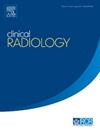Prognostic value of rotational mechanics derived from cardiac magnetic resonance (CMR)-feature tracking in light-chain cardiac amyloidosis and heart failure
IF 2.1
3区 医学
Q2 RADIOLOGY, NUCLEAR MEDICINE & MEDICAL IMAGING
引用次数: 0
Abstract
Aim
Few studies exist on myocardial torsion mechanics in light-chain cardiac amyloidosis (AL-CA) and heart failure (HF). This study evaluated the prognostic utility of torsion mechanics in AL-CA and HF.
Materials and Methods
The data of 100 AL-CA and HF patients undergoing cardiovascular magnetic resonance (2011–2019) were retrospectively reviewed. Biventricular function, late gadolinium enhancement (LGE), and torsion mechanics parameters were analyzed. Primary endpoint was all-cause mortality.
Results
Sixty-six cardiac events occurred (66 deaths) during a mean follow-up of 16.7 months (IQR 4.7–45.9). Nonsurvivors exhibited greater relative LGE mass (47.2% vs 38.0%, P=0.032), and impaired torsional mechanics: torsion (0.88 deg/cm vs 1.88 deg/cm) and peak diastolic torsion rate (-6.9 deg/cm∗s vs -8.7 deg/cm∗s; both P < 0.05). Receiver operating characteristic (ROC) analysis identified torsion≤ 1.0 deg/cm (AUC=0.70) as optimal threshold. Multivariable Cox analysis demonstrated torsion (HR=0.44, 95% CI: 0.23–0.83; P=0.011) and diastolic torsion rate (HR=0.87, 95% CI: 0.80–0.96; P=0.006) as independent predictors of all-cause mortality, providing incremental prognostic value over LGE mass (χ2 improvement: 19.9-23.4; P < 0.05).
Conclusion
Cardiac magnetic resonance (CMR)-derived torsion mechanics independently predict mortality in AL-CA and HF and enhance risk stratification beyond conventional markers (New York Heart Association [NYHA] functional class, LGE mass).
心脏磁共振(CMR)特征跟踪的旋转力学对轻链心脏淀粉样变性和心力衰竭的预后价值
目的轻链型心脏淀粉样变性(AL-CA)和心力衰竭(HF)的心肌扭转力学研究较少。本研究评估了扭转力学在AL-CA和HF中的预后效用。材料与方法回顾性分析2011-2019年接受心血管磁共振治疗的100例AL-CA和HF患者的资料。分析双心室功能、晚期钆增强(LGE)和扭转力学参数。主要终点为全因死亡率。结果平均随访16.7个月(IQR 4.7 ~ 45.9),共发生心脏事件66例(死亡66例)。非幸存者表现出更大的相对LGE质量(47.2% vs 38.0%, P=0.032),扭转力学受损:扭转(0.88°/cm vs 1.88°/cm)和峰值舒张扭转率(-6.9°/cm vs -8.7°/cm;)P <;0.05)。受试者工作特征(ROC)分析确定扭转≤1.0度/厘米(AUC=0.70)为最佳阈值。多变量Cox分析显示扭转(HR=0.44, 95% CI: 0.23-0.83;P=0.011)和舒张扭转率(HR=0.87, 95% CI: 0.80-0.96;P=0.006)作为全因死亡率的独立预测因子,提供了随LGE质量增加的预后价值(χ2改善:19.9-23.4;P & lt;0.05)。结论心脏磁共振(CMR)衍生的扭转力学独立预测AL-CA和HF的死亡率,并在传统标志物(纽约心脏协会[NYHA]功能分类,LGE质量)之外加强风险分层。
本文章由计算机程序翻译,如有差异,请以英文原文为准。
求助全文
约1分钟内获得全文
求助全文
来源期刊

Clinical radiology
医学-核医学
CiteScore
4.70
自引率
3.80%
发文量
528
审稿时长
76 days
期刊介绍:
Clinical Radiology is published by Elsevier on behalf of The Royal College of Radiologists. Clinical Radiology is an International Journal bringing you original research, editorials and review articles on all aspects of diagnostic imaging, including:
• Computed tomography
• Magnetic resonance imaging
• Ultrasonography
• Digital radiology
• Interventional radiology
• Radiography
• Nuclear medicine
Papers on radiological protection, quality assurance, audit in radiology and matters relating to radiological training and education are also included. In addition, each issue contains correspondence, book reviews and notices of forthcoming events.
 求助内容:
求助内容: 应助结果提醒方式:
应助结果提醒方式:


